Occupational safety training for seafood processing industry
99,000 ₫
Note: The above price is calculated per person and may vary depending on the number of trainees participating in the course and market fluctuations. For more accurate pricing support, please refer to the quotation or contact our consultants directly.
The Occupational Safety Training course for the seafood processing industry is a group 3 occupational safety knowledge course. The course aims to raise awareness about accident prevention during the production operation process for trainees. Accordingly, the occupational safety training content is strictly based on Article 18 Decree 44/2016/ND-CP.
Table of Contents
Toggle1. Overview of the seafood processing industry
a. What is the seafood processing industry?
- The seafood processing industry is an important industry in the national economy, with the task of processing seafood products for domestic consumption, while also helping to promote exports.
- The seafood processing industry includes the processing, preservation, packaging, and transportation of seafood products, including various types of fish, shrimp, crab, clam, oyster, squid, and other seafood.
- Processed seafood products can be frozen foods, dried seafood, canned goods, fish sauce, fermented shrimp paste, fish oil, fish cartilage, seaweed, collagen, chitosan, and many other products.

b. Types of machinery for seafood processing manufacturing
Common types of machinery for seafood processing manufacturing include:
- Fish cutting machine: this is a machine capable of cutting or mincing fish into small pieces or thin strips, saving time and effort compared to manual fish cutting.

- Fish bone separator: this machine helps separate meat from fish bones, reducing time and effort compared to separating meat by hand.

- Packaging machine: this machine is used to package seafood products such as fish balls, shrimp balls, oyster balls, and whole, cleaned, and cut fish.

- Ice cube maker: this machine helps create ice cubes to keep seafood products at a suitable temperature and fresh.

- Shrimp, squid, jellyfish processing machine: this machine is used to produce ink from various types of shrimp, jellyfish, squid… for packaging and sale on the market.

- Water filter: this machine helps filter out impurities in the water to ensure the safety and quality of the seafood.
c. Typical businesses in the seafood processing industry
Typical businesses in the seafood processing industry in Vietnam include:
- Minh Phu Seafood Corporation: The leading company in Vietnam’s seafood export sector. The company focuses on the manufacturing and processing of products from shrimp, such as black tiger shrimp, freshwater shrimp, lobster, etc.
- Nghi Son Aquatic Products Exim Co., Ltd: Established in 2003, Nghi Son Aquatic Products Exim Co., Ltd has become one of the leading companies in Vietnam in the manufacturing and export of seafood products such as shrimp, fish, squid, etc.
- Cuu Long Fish Joint Stock Company: One of the largest enterprises in the field of processing and exporting pangasius and basa fish in Vietnam.
- Thuan Phuoc Seafoods and Trading Corporation: Specializes in the manufacturing and export of seafood products such as shrimp, fish, squid, etc. to European, North American, and Asian markets.
- Ba Hai Company Limited: Established in 1994, Ba Hai Company Limited is one of the pioneering enterprises in the seafood processing field in Vietnam. The company focuses on manufacturing products from shrimp such as black tiger shrimp, freshwater shrimp, lobster, etc.
d. Specific jobs in the seafood processing industry
Specific jobs in the seafood processing industry include:
- Preliminary processing: Separating parts of fish, shrimp, crabs, etc., such as the head, legs, fins, claws, bones, shells, algae… then washing them, draining them, and preparing them for the next step.
- Slicing: Cutting seafood into pieces, slices, or strips according to customer requirements.
- Processing: Includes steps such as steaming, frying, grilling, stir-frying, braising… to create dishes from seafood such as sushi, sashimi, stir-fried seafood, grilled seafood, seafood hotpot…
- Packaging: Packaging processed seafood products, ensuring the products are kept fresh and not spoiled.
- Preservation: To prevent products from spoiling, they must be stored in a cold storage at a suitable temperature.
- Transportation: After packaging, products are transported to stores, restaurants, or to customers via transportation methods such as trucks, containers, ships, airplanes…
- Quality control: All stages in the manufacturing process must be quality controlled to ensure that the products always meet the best quality and food safety standards.
e. Products in the seafood processing industry
The seafood processing industry is one of the industries with many diverse products. Below are some main products in the seafood processing industry:
- Frozen fish: Frozen fish is produced from fish such as salmon, mackerel, tuna, herring, basa, sea bass… After being caught, these types of fish are processed on the spot to maintain the best freshness and quality. Frozen fish is preserved at sub-zero temperatures to maintain quality and freshness for longer.
- Dried squid: Dried squid is made from types of squid such as tube squid, egg squid, cuttlefish… After being caught, the squid is pre-processed and dried to become a dried squid product. Dried squid is used to prepare dishes such as stir-fried squid, grilled squid, crispy fried dried squid.
- Dried shrimp: Dried shrimp is a product made from fresh shrimp, which is then pre-processed and dried. Dried shrimp can be used to prepare dishes such as stir-fried dried shrimp, crispy fried dried shrimp.
- Field crab: Field crab is a type of crab that lives in freshwater regions. Field crab is often processed into dishes such as tamarind stir-fried crab, crab with pepper sauce, grilled crab, crab stir-fried with lemongrass and chili…
- Blood clam: Blood clam is a type of clam with high nutritional value, used to prepare dishes such as grilled blood clams with scallion oil, crispy fried blood clams, stir-fried blood clams with shiitake mushrooms.
In addition, there are other products such as fresh shrimp, fresh crab, fresh squid, as well as processed seafood products like fish sauce, fermented shrimp paste, fermented anchovy paste.
2. Overview of the occupational safety training course in the seafood processing industry
a. What is occupational safety training in the seafood processing industry?
- Occupational safety training in the seafood processing industry consists of sessions that equip workers with the knowledge to prevent labor accidents. Accordingly, those who work directly in the seafood processing industry are subjects belonging to group 3.
- The occupational safety training course will help workers recognize and prevent dangers, and limit the risks of labor accidents while working.
REGISTER FOR OCCUPATIONAL SAFETY TRAINING SERVICES
b. Training duration
Initial training duration
- The total training duration is at least 24 hours, including examination time.
- 8 hours of theoretical study on the policy and legal system for occupational safety and hygiene
- 8 hours of theoretical study on basic knowledge of occupational safety and hygiene
- 4 hours of theoretical study on specialized training content
- 2 hours of practical training on specialized training content
- 2 hours of theoretical examination at the end of the training course
The safety training center will allocate the time into multiple training sessions depending on the time arrangement for the employees. However, there are usually 6 training sessions, and the course will last for 3 days, provided that the manufacturing enterprise can arrange continuous study time.
Periodic safety training duration
- Before the occupational safety card expires, if workers want to have it reissued, they must undergo a periodic occupational safety training course, with the periodic safety training duration being at least 50% of the initial safety training duration.
Explanation: The total periodic occupational safety training duration is at least 12 hours, including examination time. After completing the periodic training course and passing the exam, workers will be reissued or have their occupational safety card renewed.
c. Content of the training course
| No. | TRAINING CONTENT | TRAINING DURATION (HOURS) | |||
| Total | Of which | ||||
| Theory | Practice | Examination | |||
| I | Policy and legal system on occupational safety and hygiene | 8 | 8 | 0 | 0 |
| 1 | Overview of the system of legal normative documents on occupational safety and hygiene. | 6 | 6 | ||
| 2 | System of technical standards and regulations on occupational safety and hygiene. | 1 | 1 | ||
| 3 | Specific regulations of state management agencies on occupational safety and hygiene when newly building, expanding, or renovating facilities for manufacturing, using, preserving, storing, and inspecting machinery, equipment, materials, and substances with strict requirements for occupational safety and hygiene. | 1 | 1 | ||
| II | Basic knowledge of occupational safety and hygiene | 8 | 8 | 0 | 0 |
| 1 | Basic knowledge of dangerous and harmful factors at the workplace. | 4 | 4 | ||
| 2 | Methods for improving working conditions. | 1 | 1 | ||
| 3 | Safety culture in manufacturing and business. | 1 | 1 | ||
| 4 | Rights and obligations of employers and employees; policies and regimes on occupational safety and hygiene for employees; functions and duties of the network of occupational safety and hygiene officers. | 1 | 1 | ||
| 5 | Occupational safety and hygiene regulations, safety and hygiene signs, and the use of safety equipment and personal protective gear; professional skills in first aid for labor accidents and prevention of occupational diseases. | 1 | 1 | ||
| III | Specialized training content | 6 | 4 | 2 | 0 |
| Comprehensive knowledge of types of machinery, equipment, and substances that generate dangerous and harmful factors; analysis, assessment, and management of risks related to occupational safety and hygiene, and safe working procedures with machinery, equipment, and substances with strict requirements for occupational safety and hygiene. | 6 | 4 | 2 | ||
| IV | Examination of occupational safety training content at the end of the training course | 2 | 2 | 0 | 0 |
| Total | 24 | 22 | 2 | ||
See more training content of the 6 groups
d. Occupational safety training certificate
After completing the occupational safety training course and passing the exam, workers will be granted an occupational safety card (in practice, it’s often called a group 3 occupational safety certificate).
The occupational safety card will clearly show information such as: full name, date of birth, specific job, and working environment. It will also include the training duration, a red stamp, and a signature confirming the completion of the training course.
According to the regulations on granting safety cards, specified in Clause 2 Article 24 of Decree 44/2016/ND-CP, there are two cases:
- If the employer and the employee have an employment contract, the employer must sign, stamp, and initial the safety card for the trained group 3 employee after they complete the training course from a safety training unit and pass the exam.
- If the employee is a freelancer, seasonal worker, and does not have an employment contract, the training unit must sign, stamp, and initial the safety card for the employee after they complete the training course from the occupational safety training unit and pass the exam.

3. Recognizing hazards in the seafood processing industry
Some hazards in the seafood processing industry include:
- Hazards from machinery: The seafood processing industry uses many types of machinery to process and package products. These machines can be dangerous to workers if not operated correctly or maintained regularly.
- Hazards from chemical products: Some chemical substances such as bleach, preservatives, and banned substances can be used in the seafood processing industry. Incorrect use or improper storage can be dangerous to workers’ health.
- Hazards from the working environment: The seafood processing industry often works in low-temperature, humid environments, which can lead to the risk of colds and strokes. In addition, the working environment can also be dangerous to health if it is not ventilated, clean, and safe.
- Hazards from tools used: The seafood processing industry uses many tools such as knives, scissors, hammers, hooks, shovels, steam pots, water nozzles,… If not used correctly, they can cause labor accidents for workers.
- Hazards from ultraviolet rays: During the seafood processing process, some products may be treated with ultraviolet rays to kill bacteria and minimize bacterial growth. However, ultraviolet rays can also be dangerous to workers’ health if not used correctly.
Therefore, to ensure safety for workers in the seafood processing industry, it is necessary to ensure the correct use of machinery, tools, chemical products, and other health protection measures.
4. Safety measures for the seafood processing industry
Safety measures for the seafood processing industry include:
- Instructing employees to use equipment, machinery, and safety gear correctly and fully.
- Minimizing exposure to toxic substances by using protective equipment such as masks, protective hats, and protective sleeves.
- Ensuring personal hygiene and the hygiene of manufacturing tools and equipment to prevent contamination and ensure product quality.
- Regularly checking and maintaining equipment and machinery to ensure safety and manufacturing efficiency.
- Occupational safety training, and granting professional certificates to workers.
- Organizing periodic safety inspections and reporting safety-related issues to management.
- Ensuring that employees are unified and knowledgeable about the regulations, procedures, and occupational safety measures in the industry.
- Implementing labor accident prevention measures, especially in activities involving the use of knives, scissors, and other sharp tools.
- Ensuring electrical safety during the manufacturing process by using safe electrical equipment and ensuring correct usage.
- Implementing fire and explosion prevention measures in the seafood manufacturing and storage factory.
- Periodically organizing work environment monitoring in factories and enterprises, collecting and analyzing harmful factors for workers, thereby adjusting the hazard level to prevent occupational diseases for them.
5. Accidents in the seafood processing industry
Types of accidents in the seafood processing industry include:
- Knife and scissor accidents: During the seafood processing process, workers use knives and scissors to cut seafood. However, if they do not wear protective gear and do not use knives and scissors correctly, workers can suffer cuts or punctures.
- Steaming pot accidents: Seafood processing often requires the use of steaming pots. If the pot is not operated correctly or is not thoroughly inspected, it can cause explosions or fires.
- Machinery accidents: During seafood manufacturing, workers use various types of machinery such as cutting machines, washing machines, drying machines,… If safety is not ensured while using these devices, workers can get stuck, burned, or injured.
- Harmful substance accidents: During the manufacturing process, seafood can be contaminated with harmful substances such as ammonia, formaldehyde,… if not controlled correctly, they can cause health problems for workers.
- Water depth accidents: If workers have to work underwater, they can drown or get trapped underwater if safety is not ensured.
6. Benefits of occupational safety training in the seafood processing industry
An Toan Nam Viet provides your business with wonderful benefits after completing occupational safety training courses in accordance with the regulations in Decree 44/2016/ND – CP on occupational safety and hygiene for companies, factories, and enterprises.
- Workers can identify potential risks of labor accidents and take preventive measures to avoid them.
- Your business can establish risk prevention measures in the manufacturing, operation, and maintenance processes.
- Minimizing costs when occupational safety risks occur.
- Uninterrupted manufacturing will help increase labor productivity and product quality.
- Complying with occupational safety laws, avoiding legal risks.
- Creating a reputation and professionalism in all aspects, thereby enhancing your business’s brand.
Nam Viet’s training courses are solutions to prevent and combat external factors that can lead to individuals getting injured or, more seriously, dying.
REGISTER FOR OCCUPATIONAL SAFETY TRAINING SERVICES
7. Customer feedback after completing the training course
An Toan Nam Viet has many years of experience in accompanying numerous businesses in Vietnam in general and in the southern provinces in particular. That responsibility is something very precious to Nam Viet, which is why Nam Viet’s Occupational Safety Training work is increasingly focused on becoming more professional. The motivation for An Toan Nam Viet to grow strongly to this day comes from the positive feedback and suggestions from businesses. Below are the feedbacks from our partners whom we have served.
Bac Nam E&C Construction Investment Joint Stock Company
“The first time I used the service at An Toan Nam Viet, I was very surprised by the enthusiastic 24/7 support from the team of consultants. The class organization was very quick and convenient for our company, thanks so much for Nam Viet’s service!”
Hoa Dat Construction and Trading Joint Stock Company
“Nam Viet’s service has helped us a lot in simplifying occupational safety and completing safety records for our work process. The team of consultants is enthusiastic and timely in answering our questions. 5 stars for Nam Viet”
See more customer interviews after using An Toan Nam Viet’s services
8. An Toan Nam Viet’s Occupational Safety Training Capabilities
An Toan Nam Viet is a reputable and high-quality occupational safety training center in Vietnam today. With occupational safety training sessions continuously taking place at manufacturing workshops, factories, or construction sites across the country (63 provinces and cities in Vietnam).
REGISTER FOR OCCUPATIONAL SAFETY TRAINING SERVICES
Occupational safety training license
- An Toan Nam Viet has been inspected and granted a certificate of eligibility to operate occupational safety and hygiene training by the Department of Occupational Safety under the Ministry of Labor – Invalids and Social Affairs. This further solidifies our capability to conduct occupational safety training.

Documents and lectures
- Before the occupational safety training documents are used in the occupational safety training courses, they are reviewed and approved to ensure that the lectures are accurate in terms of knowledge and effective when applied.
- The teaching method of our lecturers is synchronized with An Toan Nam Viet’s teaching standards, which is a method that experts in occupational safety and hygiene training have researched and refined during their teaching process to bring the highest knowledge retention for students.
Facilities
- Controlling the factors in the classroom that affect the training process will increase teaching efficiency and the effectiveness of knowledge retention for students.
- Our facilities that support the training course always have spacious classrooms that meet standards for area, lighting, training equipment, etc.
9. Reputable and quality safety training center nationwide
At An Toan Nam Viet, we always prioritize our professional dedication to occupational safety training. For us, imparting the knowledge of self-protection to workers so that they have a safe foundation on their path to earning a living is contributing to building the nation.
To ensure effective training, we meticulously and carefully prepare every small detail. From preparing tools, equipment, teaching devices to syllabi, documents, sound, and lighting.
Our occupational safety training lecturers are experts with many years of experience in the field. They even have research projects on identifying hazards in all occupations and how to prevent them.
The lecturers’ lessons are refined from practical experience and conveyed in a vivid, easy-to-imagine way to workers. These factors help workers feel comfortable during their study time and better absorb our taught knowledge. Of course, the knowledge conveyed always closely follows **Decree 44/2016/ND-CP**.
From there, they grasp many measures to prevent dangers and how to protect themselves. At the same time, they can apply it in the most suitable way in their actual work.
Our safety training center is proud to be a reputable and professional provider of occupational safety training services with the following advantages:
- Competitive training costs but guaranteed training quality.
- Flexible training schedule to match the manufacturing situation of the company.
- Quick and legally compliant procedures for granting occupational safety training certificates.
- Lecturers are experienced professionals in the field.
- Classrooms are controlled for factors affecting the training process, increasing teaching efficiency and the effectiveness of knowledge retention for students.
- The lectures are compiled to be suitable for occupational safety work at businesses.
- An Toan Nam Viet works dedicatedly and professionally to support customers accurately and quickly.

10. Refer to more occupational safety training documents for the seafood processing industry
- Set of occupational safety training documents
- Occupational safety documents for the seafood processing industry
- Occupational safety training test
11. Occupational safety training activities in the seafood processing industry
1 review for Occupational safety training for seafood processing industry
No comments yet

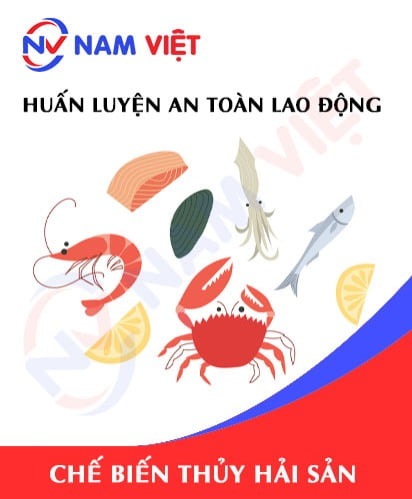
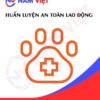
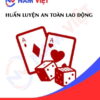




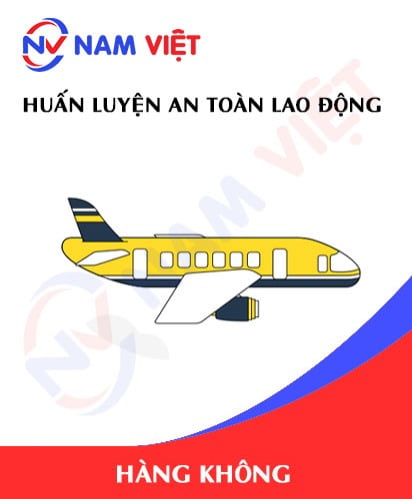
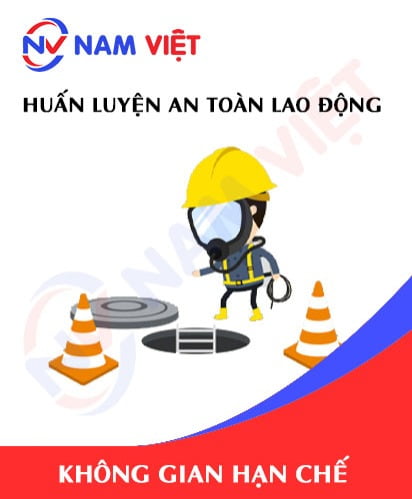
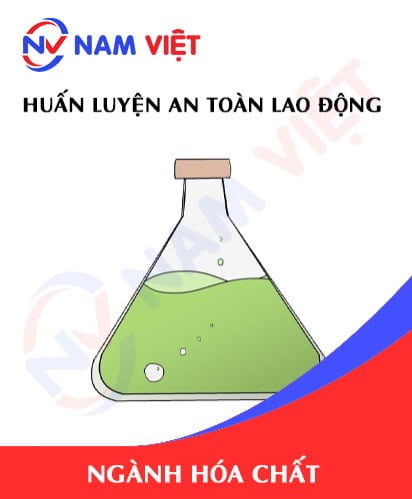
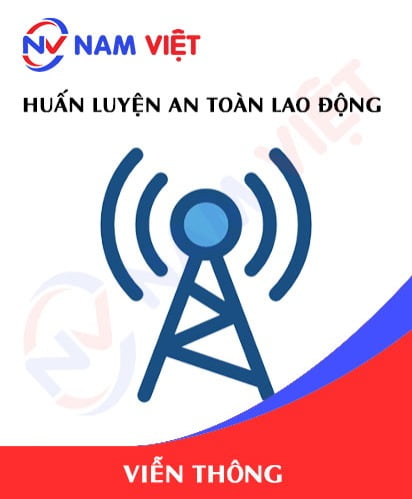
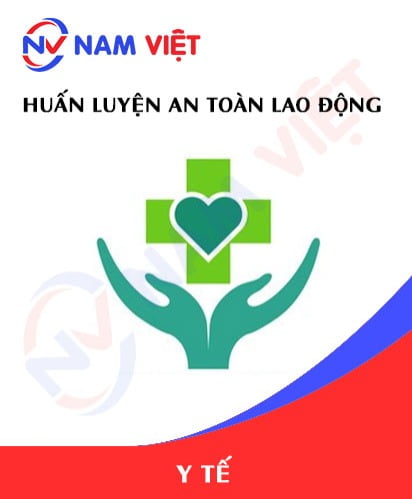
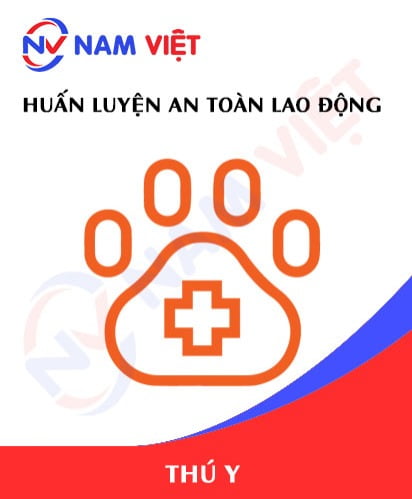
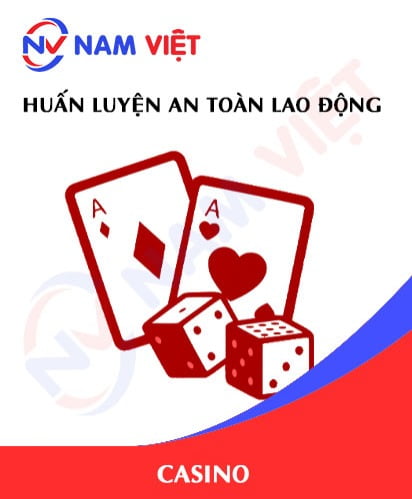
caotiensyhung.07081999
Triển khai nhanh lẹ!